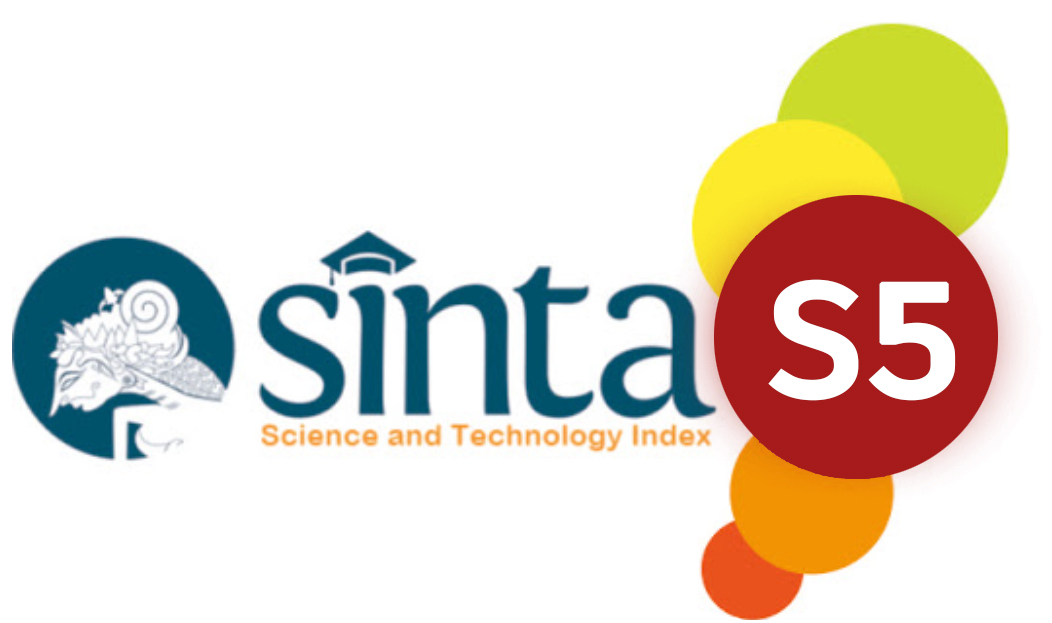KAJIAN KETAHANAN BANK UMUM SYARIAH: STUDI PEMETAAN DAN TINJAUAN SISTEMATIK LITERATUR
DOI:
https://doi.org/10.59003/nhj.v4i10.1387Keywords:
Islamic Commercial Banks, Financing Risk, Early Warning System (EWS), Islamic Banking ResilienceAbstract
This study aims to analyze trends and identify research gaps on the resilience of Islamic banking using 23 studies in the period 2019–2023. The methods used are systematic literature review and mapping study. The results of the analysis show that the majority of studies discuss the influence of the financial crisis, economic uncertainty, internal banking financial indicators and macroeconomics on the stability of Islamic banks. The regression method is the dominant approach in testing the relationship between variables, while some other studies apply the Early Warning System (EWS) to detect banking risks. However, there are several gaps in the literature that need to be considered in further research. First, many studies only focus on the analysis of Islamic banking resilience using net Non-Performing Financing (NPF) without considering its impact on certain economic sectors. Second, most studies only evaluate the significance of variables on banking resilience without calculating the optimal level of each indicator in the current economic context. Therefore, a more comprehensive approach is needed with an analysis model that is able to measure the optimal balance between risk and profitability of Islamic banking. Future research is also suggested to adopt a dynamic approach that considers the variability of economic conditions and integrates technology into the Islamic banking system to increase its resilience to both internal and external shocks.
Downloads
References
Abbas, F., Iqbal, S., & Aziz, B. (2019). The impact of bank capital, bank liquidity and credit risk on profitability in postcrisis period: A comparative study of US and Asia. Cogent Economics and Finance, 7(1). https://doi.org/10.1080/23322039.2019.1605683
Ali, A., Zulkhibri, M., & Kishwar, T. (2019). Credit risk, bank performance and islamic banking: Evidence from pakistan. International Journal of Services, Economics and Management, 9(3/4), 231–247. https://doi.org/10.1007/978-3-030-05225-6_9
Aprizal, A., Wiranatakusuma, D. B., Rizki, M., Sari, M. I., Al Zahra, M. K., & Zainal, Z. (2024). Role of Technology in Facilitating International Student Mobility: Systematic Literature and Mapping Study Approaches. In SHS Web of Conferences (Vol. 202, p. 06007). EDP Sciences
Beggs, M., & Deer, L. (2019). A Bank-Dominated Financial System. In: Remaking Monetary Policy in China. In M. Beggs & L. Deer (Eds.), Palgrave Pivot, Singapore. Palgrave Pivot, Singapore. https://doi.org/10.1007/978-981-13-9726-4
Budiman, R., Achsani, N. A., & Ismal, R. (2018). Risiko Pembiayaan dan Determinannya pada Perbankan Syariah di Indonesia. Jurnal Aplikasi Bisnis Dan Manajemen, 4(1), 151–159. https://doi.org/10.17358/jabm.4.1.151
Chen, H., & Tsang, A. (2018). Impact of US monetary policy rate shock and other external shocks on the Hong Kong economy: A factor-augmented vector autoregression approach. Pacific Economic Review, 1–18. https://doi.org/10.1111/1468-0106.12262
Damanhur, Albra, W., Syamni, G., & Habibie, M. (2018). What is the determinant of non-performing financing in branch Sharia regional bank in Indonesia. Emerald Reach Proceedings Series, 1, 265–271. https://doi.org/10.1108/978-1-78756-793-1-00081
Ghenimi, A., Chaibi, H., & Omri, M. A. (2023). Risk and performance of Islamic and conventional banks under COVID-19 pandemic: Evidence from MENA region. Arab Gulf Journal of Scientific Research. https://doi.org/10.1108/AGJSR-03-2023-0098
Ghosh, R., & Saima, F. N. (2021). Resilience of Commercial Banks of Bangladesh to the Shocks Caused by COVID-19 Pandemic: an Application of MCDM-Based Approaches. Asian Journal of Accounting Research, 6(3), 281–295. https://doi.org/10.1108/AJAR-10-2020-0102
Hosen, M. N., & Muhari, S. (2019). Non-performing financing of Islamic rural bank industry in Indonesia. Banks and Bank Systems, 14(1), 20–28. https://doi.org/10.21511/bbs.14(1).2019.03
Imam, P., & Kpodar, K. (2016). Islamic banking: Good for growth? Economic Modelling, 59, 387–401. https://doi.org/10.1016/j.econmod.2016.08.004
Kamal, A. G. (2023). The Impact of Financial Ratios on Bank Performance Before and During COVID-19: Evidence from Bank Business Activities Category 3 and 4 in Indonesia. European Journal of Business and Management Research, 8(3), 305–315. https://doi.org/10.24018/ejbmr.2023.8.3.1995
Karyotis, C., & Onochie, J. (2016). Ten challenges to have a sustainable financial system. Critical Studies on Corporate Responsibility, Governance and Sustainability, 11, 179–198. https://doi.org/10.1108/S2043-905920160000011009
Kozak, S. (2021). The Impact of Covid‐19 on Bank Equity and Performance: The Case of Central Eastern South European Countries. Sustainability (Switzerland), 13(19). https://doi.org/10.3390/su131911036
Malik, S. (2019). Developing the Resilience of Pressure Index on Islamic Banking in Indonesia. Jurnal Ekonomi Indonesia, 8(2), 225–243. https://doi.org/10.52813/jei.v8i2.24
Mawardi, I., Al Mustofa, M. U., Widiastuti, T., & Wahid, W. W. (2023). Early warning systems in Indonesian Islamic banks: A comparison of Islamic commercial and rural banks. Cogent Economics and Finance, 11(1). https://doi.org/10.1080/23322039.2023.2172803
Meuleman, E., & Vander Vennet, R. (2020). Macroprudential policy and bank systemic risk. Journal of Financial Stability, 47, 100724. https://doi.org/10.1016/j.jfs.2020.100724
Rashid, A., Yousaf, S., & Khaleequzzaman, M. (2017). Does Islamic banking really strengthen financial stability? Empirical evidence from Pakistan. International Journal of Islamic and Middle Eastern Finance and Management, 10(2), 130–148. https://doi.org/10.1108/IMEFM-11-2015-0137
Ruza, C., de la Cuesta-González, M., & Paredes-Gazquez, J. (2019). Banking system resilience: an empirical appraisal. Journal of Economic Studies, 46(6), 1241–1257. https://doi.org/10.1108/JES-06-2018-0199
Shabir, M., Jiang, P., Wang, W., & Işık, Ö. (2023). COVID-19 pandemic impact on banking sector: A cross-country analysis. Journal of Multinational Financial Management, 67(January). https://doi.org/10.1016/j.mulfin.2023.100784
Singh, Y., & Milan, R. (2020). Analysis of Financial Performance of Public Sector Banks in India: CAMEL. Arthaniti: Journal of Economic Theory and Practice, 22(1), 1–27. https://doi.org/10.1177/0976747920966866
Supriani, I., Fianto, B. A., Fauziah, N. N., & Maulayati, R. R. (2021). Revisiting the Contribution of Islamic Banks’ Financing to Economic Growth: The Indonesian Experience. Shirkah: Journal of Economics and Business, 6(1), 18–37. https://doi.org/10.22515/shirkah.v6i1.383
Ubaidillah. (2017). Analisis Faktor-Faktor yang Mempengaruhi Profitabilitas Bank Syariah di Indonesia. Jurnal Agribisnis, 4(1), 151–188.
Van Eck, N.J., & Waltman, L. (2013). VOSviewer manual. Leiden: Univeristeit Leiden , 1 (1), 1-53.
Velliscig, G., Floreani, J., & Polato, M. (2023). Capital and Asset Quality Implications for Bank Resilience and Performance in the Light of NPLs’ Regulation: a Focus n the Texas Ratio. Journal of Banking Regulation, 24(1), 66–88. https://doi.org/10.1057/s41261-021-00184-y
Xu, X., & Lu, L. (2020). A Study on the Connotation and Extension of Bank Resilience: Based on the Perspective of Active Risk Management. Modern Economy, 11(06), 1141–1154. https://doi.org/10.4236/me.2020.116083
Widarjono, A. (2018). Estimating Profitability of Islamic Banking in Indonesia. Jurnal Keuangan Dan Perbankan, 22(3), 568–579. https://doi.org/10.26905/jkdp.v22i3.2197
Widarjono, A., & Rudatin, A. (2021). The Determinants of Indonesian Islamic Rural Banks’ Non-Performing Financing. Global Review of Islamic Economics and Business, 9(1), 29–41.
Wiranatakusuma, D. B. (2018). Constructing Islamic Banking Resilience Index in Indonesia. Journal of Islamic Monetary Economics and Finance, 3, 59–82. https://doi.org/10.21098/jimf.v3i0.760
Wiranatakusuma, D. B., Aprizal, A., & Kamil, M. (2024, December). Smart farming for sustainable agriculture: systematic literature and mapping study approaches. In IOP Conference Series: Earth and Environmental Science (Vol. 1417, No. 1, p. 012046). IOP Publishing
Zaid, Z., & Rehman, A. U. (2020). Bank Resilience Over The Business Cycle In A Dual Banking System. International Journal of Business and …, November. https://doi.org/10.5281/zenodo.4253177
Zuhroh, I. (2022). Mapping Islamic Bank Governance studies: a systematic literature review. Cogent Business & Management, 9(1), 2072566.
Zultaqawa, Z., Alexandri, M. B., & Hardinata, C. (2019). Competitive Advantages in Small and Medium Enterprises: A Study of Systematic Mapping. AdBispreneur: Jurnal Pemikiran Dan Penelitian Administrasi Bisnis Dan Kewirausahaan, 4(16), 217-228.
Downloads
Published
How to Cite
Issue
Section
License
Copyright (c) 2025 Dimas Bagus Wiranatakusuma

This work is licensed under a Creative Commons Attribution-NonCommercial-ShareAlike 4.0 International License.
NHJ is licensed under a Creative Commons Attribution-NonCommercial-ShareAlike 4.0 International License.
Articles in this journal are Open Access articles published under the Creative Commons CC BY-NC-SA License This license permits use, distribution and reproduction in any medium for non-commercial purposes only, provided the original work and source is properly cited.
Any derivative of the original must be distributed under the same license as the original.
























